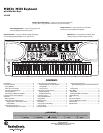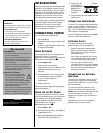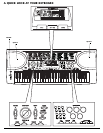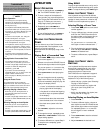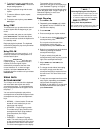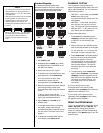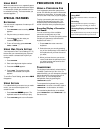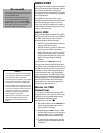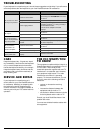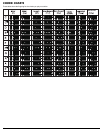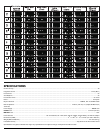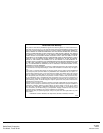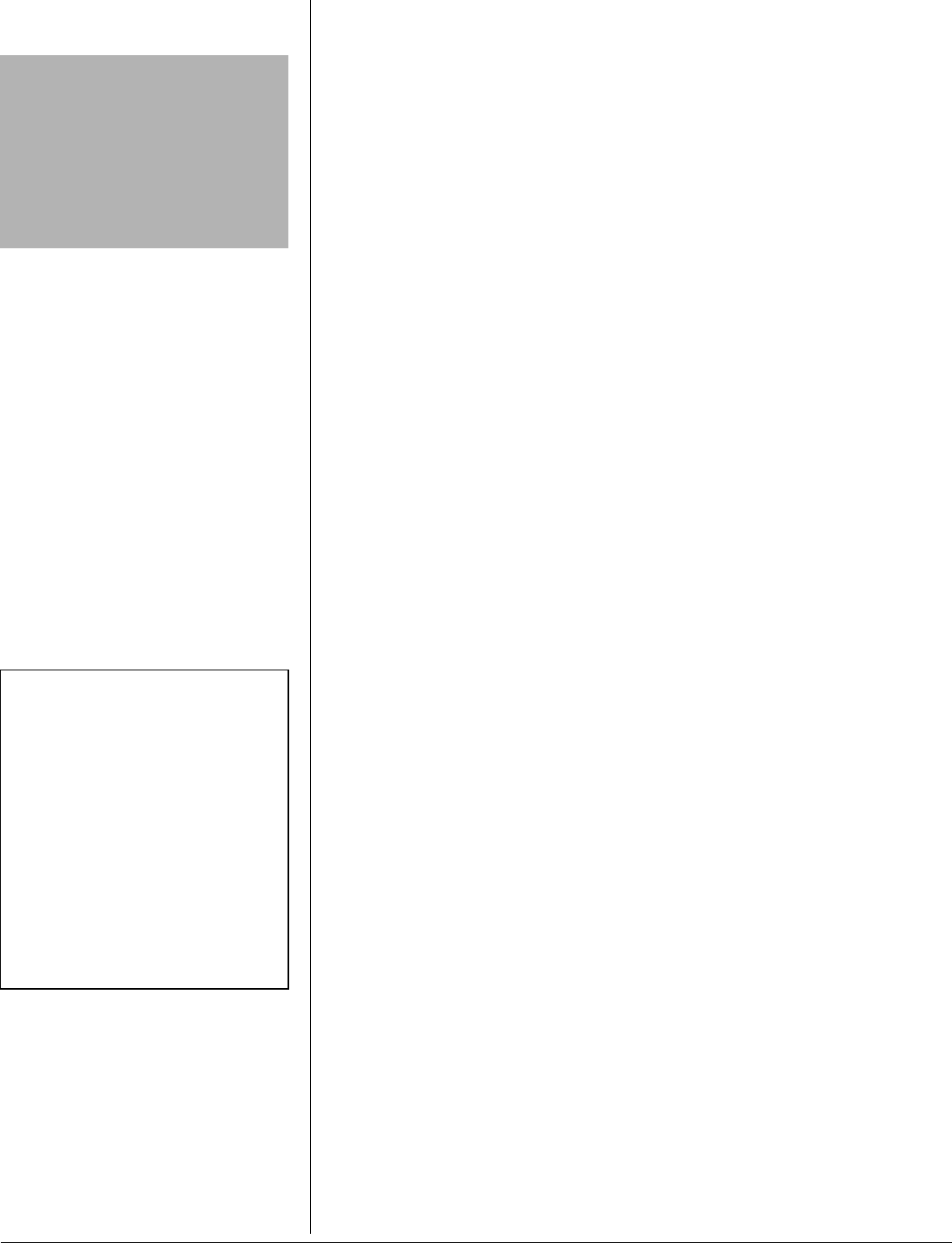
8
75+0)"/+&+
Your keyboard includes a feature called MIDI
(Musical Instrument Digital Interface). MIDI is
the universal standard for sending and
receiving performance data between all types
of electronic musical instruments, regardless
of the manufacturer.
Using MIDI, you can play music on your
keyboard and another instrument at the same
time while pressing the keys on only one,
record your music to a sequencer, acquire a
wider selection of preset tones from a sound
module, and much more.
#$176"/+&+
Every MIDI-equipped instrument has a MIDI
OUT terminal, and some also have a MIDI IN
and MIDI THRU terminal. Each of these
terminals serves a different purpose.
• MIDI OUT sends MIDI data to (“talks to”)
the other MIDI instrument(s).
• MIDI IN receives (“listens to”) MIDI data
sent by the other MIDI instrument(s).
• MIDI THRU lets you connect (“network”)
additional MIDI instruments, and sends
along to other MIDI devices a copy of all
data it receives through its MIDI IN
terminal.
Your keyboard has a
MIDI
OUT
terminal.
The cable that connects MIDI devices does
not actually carry sound between them, like a
speaker wire carries sound from a receiver to
a speaker. Instead, MIDI-equipped devices
communicate with each other using digital
codes (instructions). One MIDI device sends
digital instructions representing exactly what
is being played on it. The other MIDI device
receives and translates those instructions,
then produces (or records) the sound as it
was played on the first device.
±ý
/#-+0)"6*'"/+&+"
%
100'%6+1 05
To connect your keyboard to another MIDI-
equipped device, you must use a MIDI cable
(available at your local RadioShack store).
The keyboard’s MIDI data is sent
automatically as you play.
.
..
.
1. Use a MIDI cable to connect
MIDI OUT
on
the back of the keyboard to the other
device’s MIDI IN terminal.
2. Repeatedly press
MIDI
to select a MIDI
channel. MIDI uses up to 16 channels to
exchange data. As in a TV broadcast,
different channels send different data.
3. To transmit to the MIDI device, play the
melody using the keyboard’s black and
white keys.
±
"016'"
±
"
• Connecting your keyboard to another MIDI
device requires a MIDI cable (not supplied).
See “Making the MIDI Connections”.
• The keyboard’s auto-rhythms, prerecorded
tunes, sustain information, and transpose
information cannot be sent as MIDI data.
• If you send MIDI data to a device such as a
personal computer, the computer will need
a sound card, software to interpret the data,
and a pair of speakers (none supplied).
RadioShack carries sound cards, MIDI
cable, speakers, and software.
• MIDI Channel 10 is preset to percussion
data in some MIDI receiving devices,
depending on the specific device you
select.
.
"%#76+10"
.
• Always turn off power to your keyboard and
the other MIDI device before you connect or
disconnect MIDI cables.
• As you make the cable connections, be
sure to align the MIDI cable pins with the
matching holes on your keyboard’s MIDI
OUT terminal. If you have trouble plugging
in the cable, do not force it! You might
damage the plug or the instrument.



